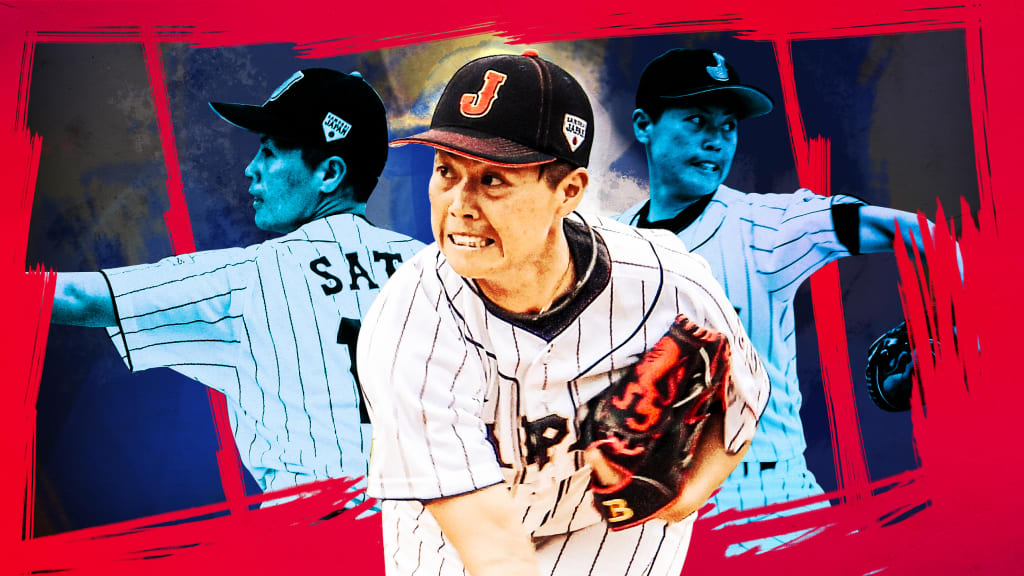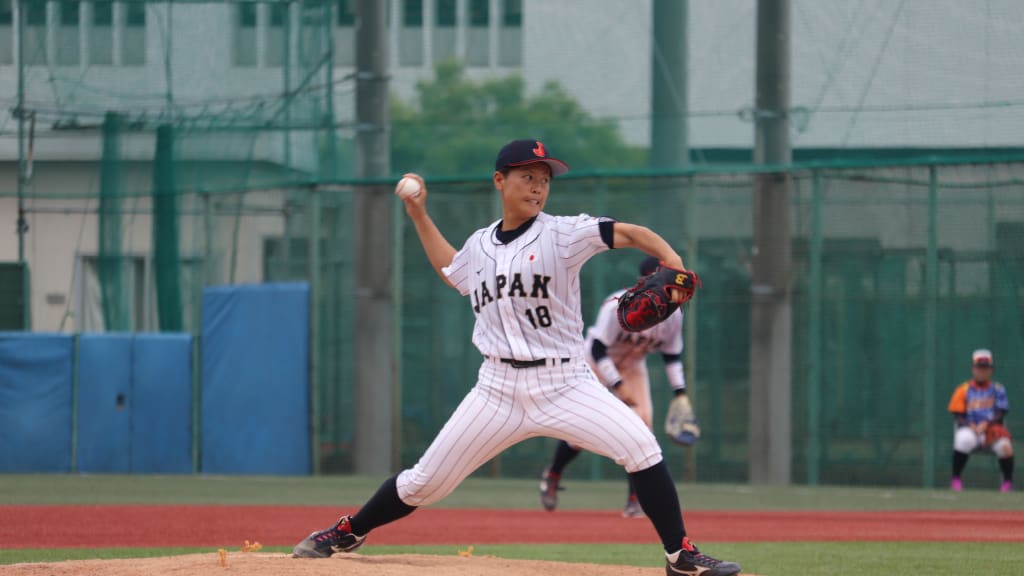"I liked to throw since I was a child and I also didn't like to lose," Samurai Japan ace pitcher Ayami Sato said through interpreter Sho Kurematsu over Zoom ahead of the WBSC Women's World Cup Group B that begins this week in Miyoshi City, Japan. (Group A recently finished in Thunder Bay, Ontario, with the United States, Canada and Mexico advancing to next year's finals.)
It is a sentence that describes how she first became interested in the sport, but is perhaps also a motto for her work on the mound, too. That's because Sato just may be the most dominant female pitcher in baseball history. She's represented Samurai Japan for the last five World Cups -- Japan, the No. 1 women's baseball team in the world, has now won six world championships in a row heading into this year's tournament -- and has won three consecutive MVP Awards. Armed with an upper-70s fastball, a curveball and a darting slider which she learned in college from former Seibu Lions pitcher Hiroshi Shintani -- she claims it's her best pitch -- Sato's pitched 61 2/3 innings, struck out 56 batters and given up just six runs over the last four tourneys.
Suffice to say, the next player to win the MVP Award will need to pry it from Ayami's grasp because she's not done yet.
"I think what I've been able to achieve is fairly unique, and I'm very happy about this," Sato, now 33 years old, said. "But something that I would like to achieve as a pitcher is throwing a no-hitter. At the same time, I feel that as a baseball player, it's not just what I achieve on the field, but I also want to deliver excitement, deliver passion and also give courage to other girls playing baseball."
You would think it would be easy for someone with Sato's skills to carve out a life on the baseball field. But even for someone as naturally gifted and feverishly committed to the sport as Sato is, there was still resistance. Like most young girls around the world, Sato grew up playing baseball alongside and against boys teams. She had watched her brothers playing baseball, and while she played basketball on girls teams, what she really wanted to do was be out on the mound.
"Playing amongst boys, it was a matter of figuring out how to throw faster or how to create movement in order to beat them," Sato said. "I remember throwing a ball against the wall and kind of testing it to see how it can get better, how it can get better movement, how it can get better speed while still having fun."
Her drive to succeed and desire to win no matter the odds may have helped her out on the field, but even then, there were demands that she switch sports and take up softball.
"There's always been that kind of pressure [to change sports] growing up," Sato said. "I felt that when I was going from elementary school to middle school and also middle school to high school. There was just the lack of an environment to play girls baseball, while changing schools or moving up in schools at every stage."
There were no role models for Sato to follow, no women to look up to that said, "You can do this, too." Sato dreamed of playing in the Koshien -- the premiere high school baseball tournament that is held every summer -- or taking the field for an NPB team, but that simply wasn't an option for her.
"There was no environment for me to play baseball," Sato said. "When I moved to middle school, it was just by chance that the teacher overseeing the team said 'OK,' and allowed me to play for the team and play in games. Luckily, I was able to find a high school with a girl's baseball team and in Grade 11, and for the first time in the country, a girl's baseball team made it to Shobi University inside Saitama prefecture. All the way throughout my baseball life, I was able to find my own way."

Though Sato had to often go it alone, things are changing these days. There are more girls and women's baseball teams than ever before in the country. Though the Japan Women's Baseball League folded in 2019 -- naturally, Sato dominated there, leading the league in strikeouts in three of the last four seasons while posting a 2.31 ERA -- NPB teams have begun adding women's clubs alongside the men's teams (Sato now plays for the Seibu Lions Ladies, though official games between teams are still a ways off).
According to Hiroko Yamada, president of the Women’s Baseball Federation of Japan, there are now 23,000 women's baseball players in Japan, with The Yomiuri Shimbun reporting that there are now 102 women's baseball teams spread across the country -- an increase of 40 since 2015 -- while "high school teams have doubled over the past five years and now number more than 50." There's now a women's Koshien, too, taking part just before the boys teams begin play in August. Compare that to the United States, which has no formal women's baseball programs and you can see why Japan has the distinct advantage in World Cup victories over the last decade-plus.
"It's growing so fast, we can't catch up," Yamada said. "There are three NPB teams now, the Seibu Lions, where Sato is playing, the Tokyo Giants and the Hanshin Tigers. We're trying to stimulate our neighbor, the CPBL [Chinese Professional Baseball League], to start a women's team as well."

After making her debut as a 20-year-old, Sato has seen a changing of the guard over the past five years since the last time Japan's women's team competed. (COVID canceled the 2020 tournament in Mexico.) She's played against the best women's baseball players in the world and come out on top nearly every time.
She points to her first tournament in 2010 as the moment that gave her the confidence to succeed. Facing the United States, she came into a no-out, bases-loaded situation and had to face Tamara Holmes, one of the greatest power hitters in women's baseball history.
"I had a lot of nerves at that time. I really just threw without thinking. I just had to do my best in that situation," Sato said, getting Holmes to ground into an inning-ending double play. "I came out on top in that experience, which gave me a lot of confidence moving forward."
Now, though, Sato must be the veteran leader for Samurai Japan as it looks to defeat No. 2-ranked Chinese Taipei and come out on top of Group B before playing in the finals next year. The baton has been passed to her and she takes that role seriously.
"At this point, I need to think about not how do I build a strong career, but how do I build a strong team?" Sato said. "How do I create an atmosphere where younger players can succeed? So, in that sense, my mindset as a player on the national team has changed."
Her dreams of playing in the Koshien may not have come true, but it's now a possibility for the women coming behind her. She looks back on her career with pride and sees a bright future for herself, Samurai Japan and any young woman who wants to play baseball.
"I would have loved to play in the Koshien. I would have loved to be able to play as an NPB player, but I knew from the very beginning that was something I had to give up," Sato said. "But looking back on my career, I didn't expect to be able to play for Team Japan. I didn't expect to be able to carry the flag and represent my country and be able to play against international players. I'd like to use the platform I have now to give courage to kids in any circumstance or environment that are able to play baseball. I want to make sure they have hope to do something similar in the future."
